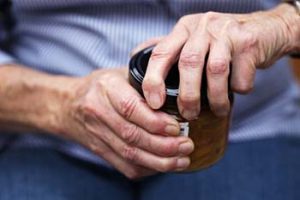Embedding Universal Design in Packaging to Increase Accessibility


Image via Harvard Health
For the one billion people around the world (15% of the population) who experience some form of disability, accessible product packaging is unfortunately still the exception rather than the norm. The wide range of everyday items in hard-to-open packaging present barriers for the disabled, the aging population, people affected by illnesses and more. More companies should adopt product packaging solutions designed for universal use. Increasing the accessibility of products is the right thing to do. A bonus for brands delivering accessible products is a healthier bottom line.
Accessible design, also called universal design, embeds accessibility and inclusivity in design. When applied to consumer products, this concept involves a customer-centric design approach focused on making products easy to open and consume. The 7 Principles of Universal Design, developed in 1997 by a working group of architects, product designers, engineers and environmental design researchers, serve as a guide to designing everything from environments to products to communications.
CCT’s innovative EEASY Lid is designed to help brands embed accessibility into their product packaging. The software designed EEASY Lid, adheres to many of the 7 Principles of Universal Design. The EEASY Lid was designed with people of all ages and abilities in mind (equitable and flexible), is easy to use (simple and intuitive), eliminates the hazards of sometimes dangerous jar lid opening hacks (tolerance for error), and is up to 50% easier to open than standard jar lids (low physical effort).
The 7 Principles of Universal Design are:
- Equitable Use: The design is useful and marketable to people with diverse abilities.
- Flexibility in Use: The design accommodates a wide range of individual preferences and abilities.
- Simple and Intuitive Use: Use of the design is easy to understand, regardless of the user’s experience, knowledge, language skills, or current concentration level.
- Perceptible Information: The design communicates necessary information effectively to the user, regardless of ambient conditions or the user’s sensory abilities.
- Tolerance for Error: The design minimizes hazards and the adverse consequences of accidental or unintended actions.
- Low Physical Effort: The design can be used efficiently and comfortably and with a minimum of fatigue.
- Size/Space for Approach & Use: Appropriate size and space is provided for approach, reach, manipulation, and use regardless of user’s body size, posture, or mobility.
Everyone benefits when brands apply the 7 Principles of Universal Design to make their products more accessible. Consumers of all ages and abilities benefit through an enhanced user experience that allows them to open and use products without assistance. Companies benefit through an expanded customer base, increased customer loyalty, greater market share and higher profits.
An increasing number of brands are taking steps to embed accessibility into packaging design. Some innovative examples of accessible packaging include:
- Tropic Skin Care – The company worked with a design agency to develop a new script typeface that is accessible to dyslexic and neurodiverse consumers. According to an article in Packaging Europe, “the typeface, Susie’s Script, combines readability with a dynamic design that mirrors handwriting …”
- Herbal Essence Shampoo and Conditioner – Herbal Essences’ bottles feature tactile marks that help blind people and people with low vision distinguish between the shampoo and conditioner bottles. The shampoo bottle is marked with stripes and the conditioner is marked by circles.
- Olay Easy Open Lid – In November of last year, Olay unveiled an easy open lid, a limited prototype developed with and for people with disabilities. The lid features an easy open winged cap, extra grip raised lid, high contrast product label and Braille text “face cream.” The new lid will be incorporated into the design of OLAY’s most popular products.
- Rare Beauty – The Rare Beauty makeup range launched by singer, actress and producer Selena Gomez is packaged with accessibility in mind. The product packaging was inspired by the star’s struggle with Lupus which can cause pain and reduced grip strength. Rare Beauty products are packaged in larger containers for a more comfortable grip and the rounded tops of the makeup bottles make the products easier to open.
The power of CCT’s EEASY Lid to increase the accessibility of products can help brands reach more consumers and positively transform the consumer experience. Contact us today to learn more.